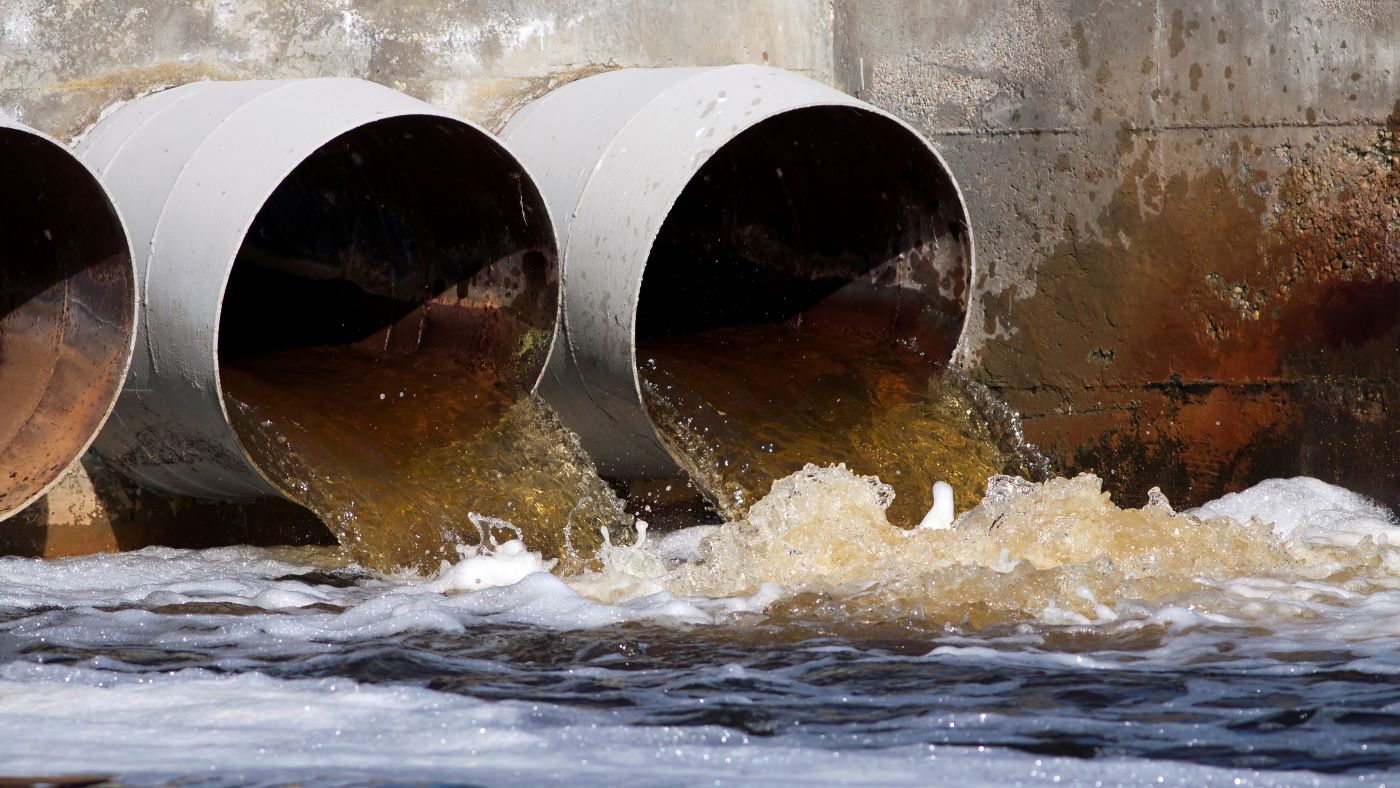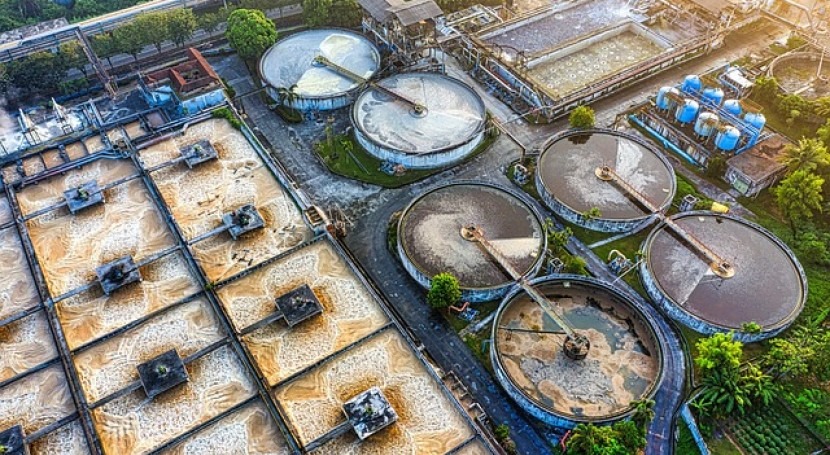Necessary Action In Community Waste Water Treatment Plants
Necessary Action In Community Waste Water Treatment Plants
Blog Article
Strategic Approaches to Boost Drainage Therapy Effectiveness and Decrease Ecological Impact
In the world of waste water therapy, the mission for enhanced performance and lowered ecological influence is a continuous difficulty that requires tactical solutions. The assimilation of innovative therapy modern technologies, energy-efficient procedures, source healing strategies, boosted nutrient removal strategies, and wise monitoring and control systems stands for a multifaceted structure for attending to these pressing worries.
Advanced Therapy Technologies
Advanced membrane layer filtration systems have actually revolutionized sophisticated wastewater treatment procedures, considerably improving the elimination of pollutants. These cutting-edge systems work by compeling water through a semi-permeable membrane, properly separating pollutants from the water stream. The membrane layer's tiny pores trap contaminants such as microorganisms, infections, and suspended solids, enabling just detoxified water to pass through. This innovation has actually confirmed to be highly efficient in eliminating a variety of pollutants, consisting of drugs, heavy metals, and organic compounds, which are commonly testing to eliminate through standard therapy approaches.
In addition, membrane layer purification systems supply many benefits over traditional treatment methods. They require much less room, generate higher-quality effluent, and are a lot more resistant to fluctuations in influent water quality. Additionally, these systems are highly flexible and can be easily incorporated into existing therapy plants or made use of as standalone systems for decentralized applications. As the need for tidy water proceeds to climb, the adoption of advanced membrane layer filtering innovations is vital to guarantee lasting and reliable wastewater therapy methods.
Energy-Efficient Procedures
The combination of energy-efficient procedures in wastewater therapy systems is important for maximizing source usage and minimizing functional costs. One vital method to boosting energy performance in wastewater therapy is the use of innovative oygenation systems, such as great bubble diffusers or surface area aerators, which can boost oxygen transfer efficiency and lower energy usage.
In addition, maximizing procedure control and automation via using advanced sensors and checking systems can boost total power performance by readjusting procedures in real-time based upon actual demand and conditions. Executing energy audits and consistently checking energy performance indicators are essential practices to recognize locations for enhancement and track energy-saving efforts successfully. Generally, the adoption of energy-efficient processes in wastewater therapy not just benefits the environment but also adds to long-term price financial savings and functional sustainability.
Resource Healing Approaches
With a focus on optimizing source application and sustainability in wastewater therapy systems, the implementation of source recuperation techniques emerges as a crucial element in improving functional effectiveness. Resource recuperation methods in wastewater treatment entail the identification and removal of useful sources from the waste stream, thus transforming what was once taken into consideration waste right into an important possession. By carrying out source healing strategies such as nutrient removal and healing, power generation from organic issue, and the manufacturing of recyclable water, wastewater therapy plants can reduce environmental effect while making the most of performance.

Boosted Nutrient Removal Methods
Implementing innovative nutrient removal techniques is necessary for maximizing the effectiveness of wastewater therapy systems. Boosted their website nutrient removal plays a critical duty in minimizing the ecological influence of treated effluent released into water bodies. Among the key strategies utilized for improved nutrient removal is the procedure of biological nutrient removal (BNR), which includes the elimination of nitrogen and phosphorus through biological processes. This can be accomplished with making use of specialized microorganisms that can transform nitrogen substances right into inert nitrogen gas via denitrification, and gather phosphorus within their cells through a process called improved biological phosphorus elimination (EBPR)

In addition to BNR, progressed treatment methods such as membrane layer bioreactors (MBRs) and constructed wetlands can additionally be utilized to boost nutrient elimination effectiveness. By integrating these sophisticated nutrient elimination techniques into wastewater treatment markets, systems and districts can properly minimize nutrient pollution and secure the setting.
Smart Monitoring and Control Systems
Utilizing cutting-edge modern technology, the integration of smart surveillance and control systems transforms the functional efficiency of wastewater therapy facilities. These systems integrate advanced sensing units and data analytics to continuously keep an eye on essential criteria such as pH levels, turbidity, liquified oxygen, and circulation prices in real-time. By collecting and analyzing this data, operators can acquire useful understandings right into the efficiency of the therapy procedures, making it possible for positive modifications to enhance treatment performance.
Smart click to find out more surveillance and control systems additionally support remote monitoring capacities, allowing drivers to gain access to real-time information and control functions from off-site areas. This remote access improves functional flexibility and responsiveness, making it possible for swift treatments in case of system malfunctions or variations in influent high quality. Furthermore, the predictive upkeep capabilities of these systems assist protect against equipment failings and minimize downtime, eventually boosting the overall dependability of wastewater treatment operations (Waste Water Treatment).
Verdict
To conclude, tactical strategies such as advanced therapy modern technologies, energy-efficient processes, resource healing techniques, boosted nutrient removal methods, and wise monitoring and control systems play an essential function in boosting wastewater therapy efficiency and decreasing environmental effect. By applying these methods, wastewater treatment plants can boost their general efficiency, minimize power usage, recuperate useful resources, and guarantee compliance with environmental policies. These methods Click Here are necessary for efficient and sustainable wastewater management techniques.

In verdict, calculated approaches such as sophisticated therapy innovations, energy-efficient procedures, resource recuperation techniques, boosted nutrient removal methods, and clever monitoring and control systems play an essential duty in enhancing wastewater therapy performance and reducing environmental influence.
Report this page